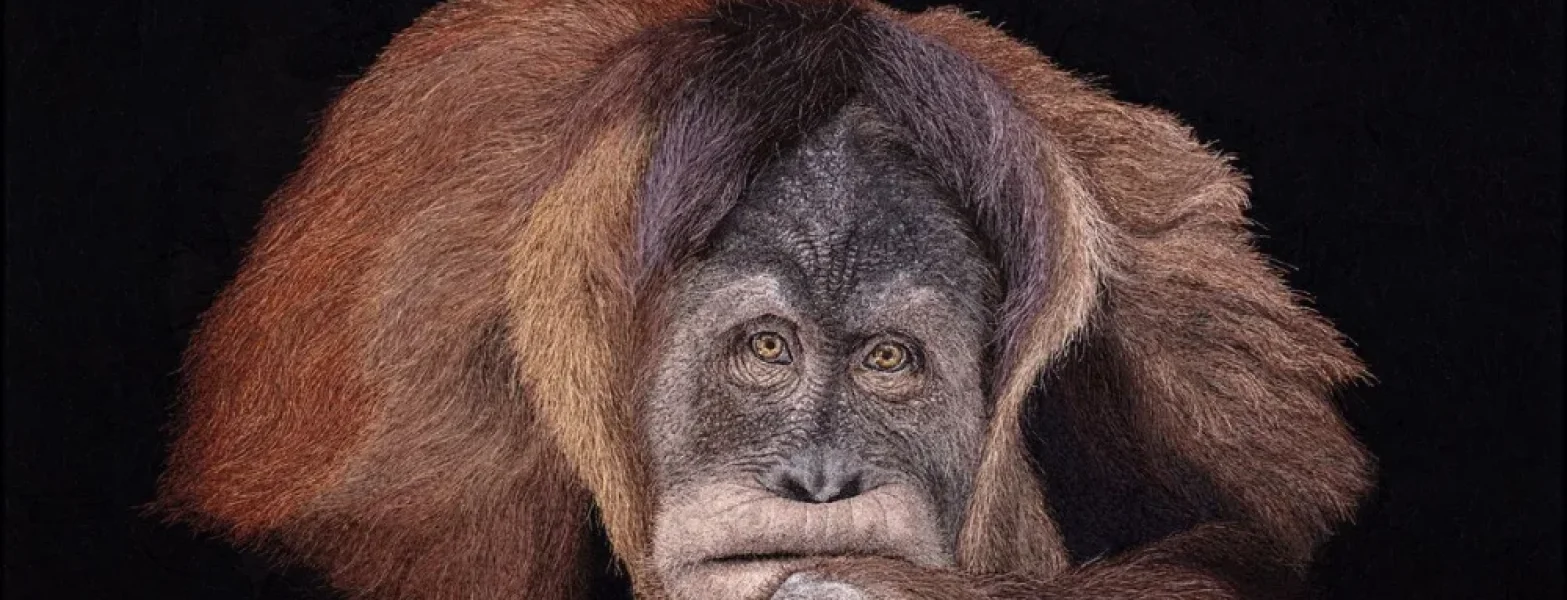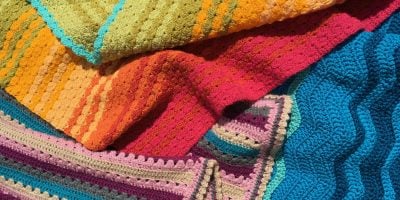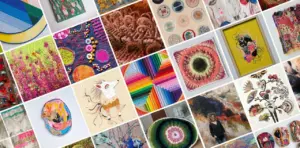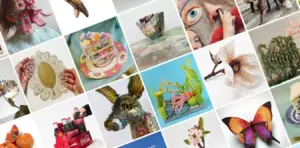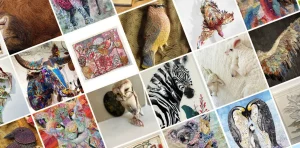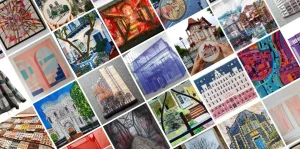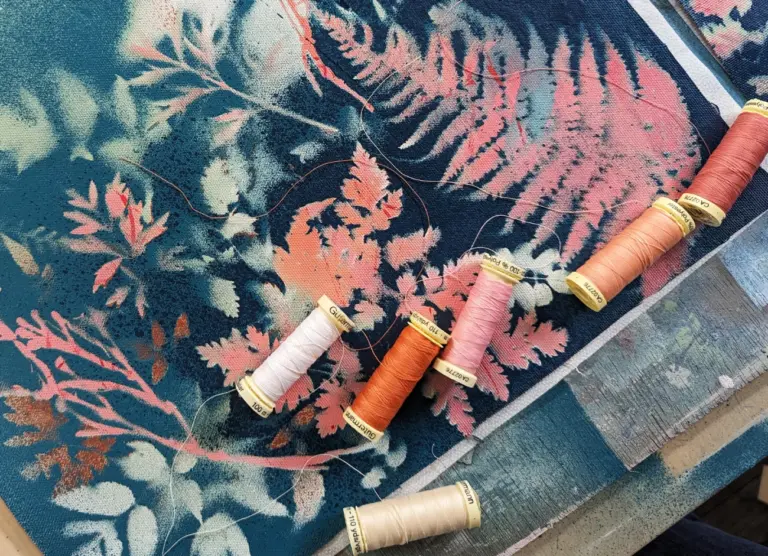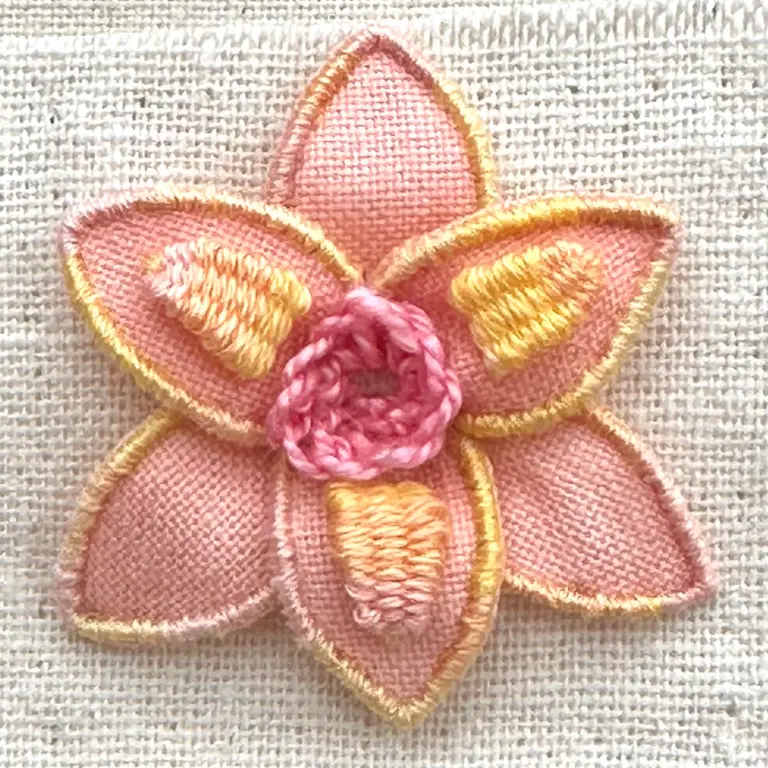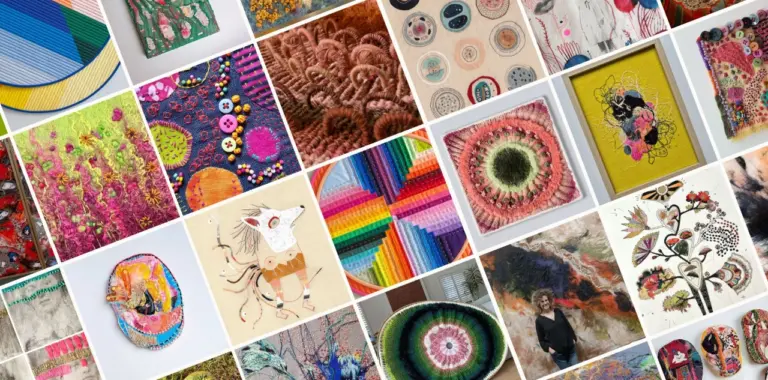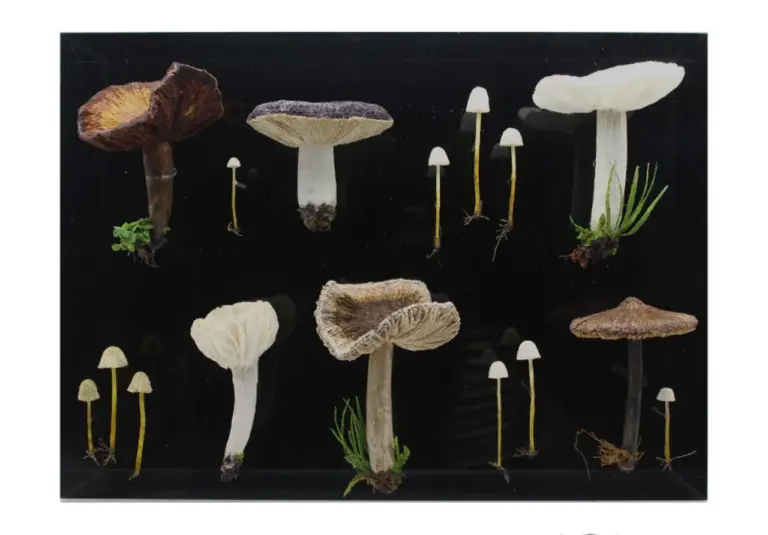Hailing from the picturesque landscapes of Austria, Janine Heschl is not just an embroidery artist; she is a storyteller, a wildlife enthusiast, and an ARTivist on a mission to celebrate the marvels of nature while raising awareness for its preservation.
Janine’s journey into the realm of textile art is as unconventional as it is inspiring. Armed with a degree in makeup artistry and a diverse academic background ranging from Tourism Management to kinesiology and counselling, she found her true calling in the delicate dance of needle and thread. It was during her days as a stay-at-home mom nurturing her two boys that Janine’s fascination with textiles blossomed into a full-blown passion.
What sets Janine’s art apart is her fearless spirit of experimentation and her relentless pursuit of perfection. Through the ingenious use of free-motion sewing technique, she breathes life into her creations, meticulously crafting photorealistic animal portraits that leap off the fabric with unparalleled vitality. Every stitch, every contour, speaks volumes of her dedication to capturing the essence of nature’s breath taking beauty.
But Janine’s art is more than just art; it is a poignant reminder of our responsibility towards the planet. With each masterpiece she creates, she endeavours to shine a spotlight on the plight of endangered species, using her talent as a tool for advocacy and change.
We caught up with Janine Heschl to find out more about her world of artistry and advocacy, where every thread tells a story of passion, perseverance, and the timeless beauty of nature.
Janine Heschl
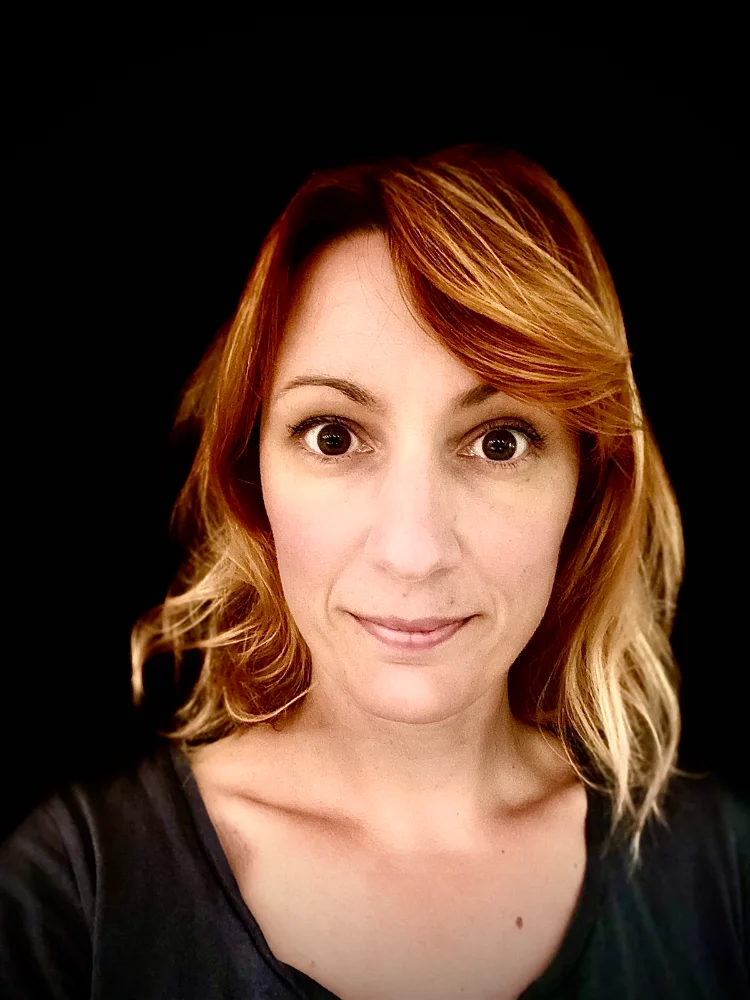
“Although, I have found joy in every one of those positions, none gave me the purpose that I find in textile art. Here I get to have an opinion and express it. I get to show the world what is close to my heart and convey a message. I can raise awareness and funds with my work and I have an amazing community to be part of. It took me a while to find what I was looking for, but I am ‘home’ now!”
What was your first memory of stitching?
My first memory I have of stitching was when I turned 14 and I really wanted some bellbottom jeans but my parents refused to buy me some. So I went ahead, grabbed my mother’s sewing machine and managed to sew my own by upcycling an old pair of jeans I found lying around. I remember adding some lace around the hem lines at the bottom too . But this was mainly to cover up the obvious: that I had no idea about sewing!
I am completely self taught. When I became a mother for the first time 14 years ago, I decided to give sewing another chance and make my own baby clothes. I bought a cheap sewing machine and followed all the tutorials I could find online to get back into it. However, the more I tried to sew in a straight line the wonkier it all turned out. It was quite frustrating actually and I remember standing at the crossroads with two ways to go: throw my machine out the window or use it in a more creative matter. And it was Poppy Treffry, a Cornwall based textile artist, inspired me to become creative. She used her machine as a pencil and sketched in free motion using raw applique techniques. It was love at first sight and it developed into what I am embroidering today over the course of 12 years.
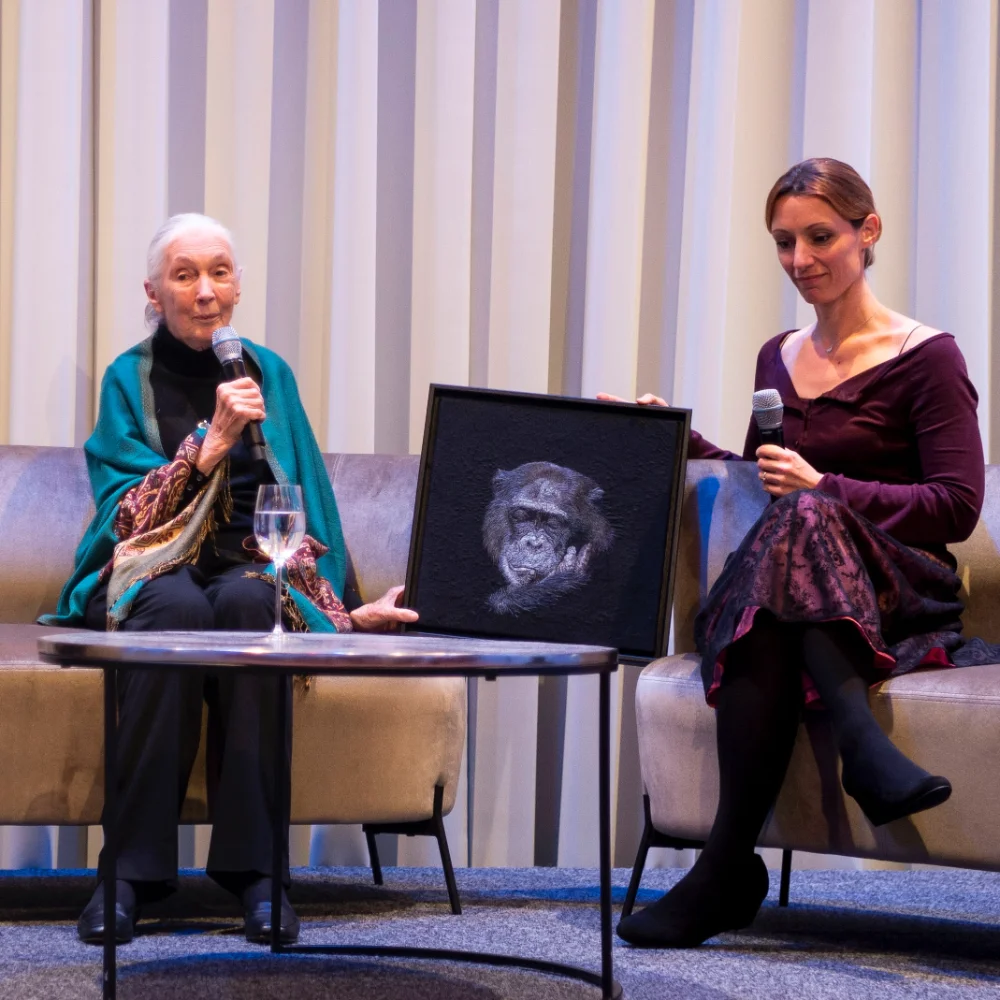
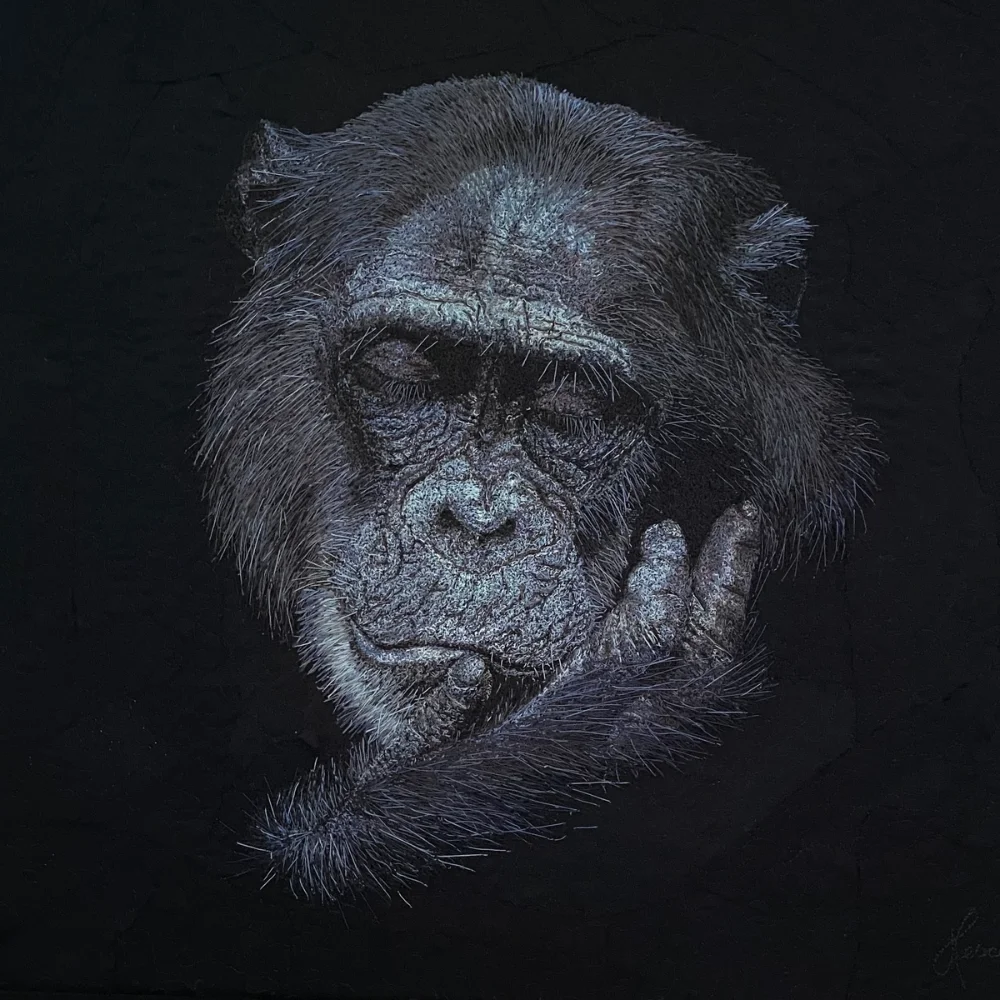
Your work is so wonderfully life-like! Can you talk us through the process from deciding on a source through to working the final piece?
It all starts out with a good couple of hours of scanning through websites of wildlife reference photos. I don’t always go looking for a certain subject or pose, I just wait for that tingle at the back of my neck when looking at the photos, because that tells me that I have found what I was looking for. I let the animals find me, rather than the other way around.The next step is to choose the size of the portrait, make any needed adjustments to the reference photo and to create a sketch of it on my fabric base. This is often followed by the process of creating a detailed fabric collage using mainly Batik fabric snippets on top of that sketch.
The collage will be fully covered with thread during my embroidery process and I often get asked why I bother in the first place – but the collage is my navigation map. It lets me know where one area starts and the other one ends. It helps me translate the photo and sectioning off my work into smaller areas, so I can fully zoom in during work and not lose my orientation.
I always start out with the eyes, as they are the most difficult as well as revealing part of the portrait. They set the emotion and the mood for the entire piece, so I usually spend about 2 hours on each eye to really get them right and to create expression. It can happen that I use over 30 different colours of thread for one eye, as they are very complex depending on the dimensions of size I am working in. The larger, the greater the opportunity to add more details. Once the eyes are done, I fan out with my embroidering process and work my way towards the edges.My embroidery process is based on layering thread to create realism. So, when you imagine a patch of grey fur on a wolf for example, I would use about 6-8 different colours of greys and shades of blue to replicate that, starting with the darkest tone, working my way into the highlights.
Fur is very complex and it isn’t just one colour, so it’s always worth it to study your subjects closely! And that is what is the most time consuming part of the process – the going back and forth from the reference photo to the fabric, double checking which shade of colour is next and which direction the fur for example goes. Inevitable when working in realism.
When the embroidery process is finished, I create my background. I choose black medium weight calico for my works, as it is sturdy enough to stretch over artist canvas in the end, but also thin enough to get into my wooden hoops when stitching. I usually patch the background black on black to create a roughness and to make the subject pop out more.
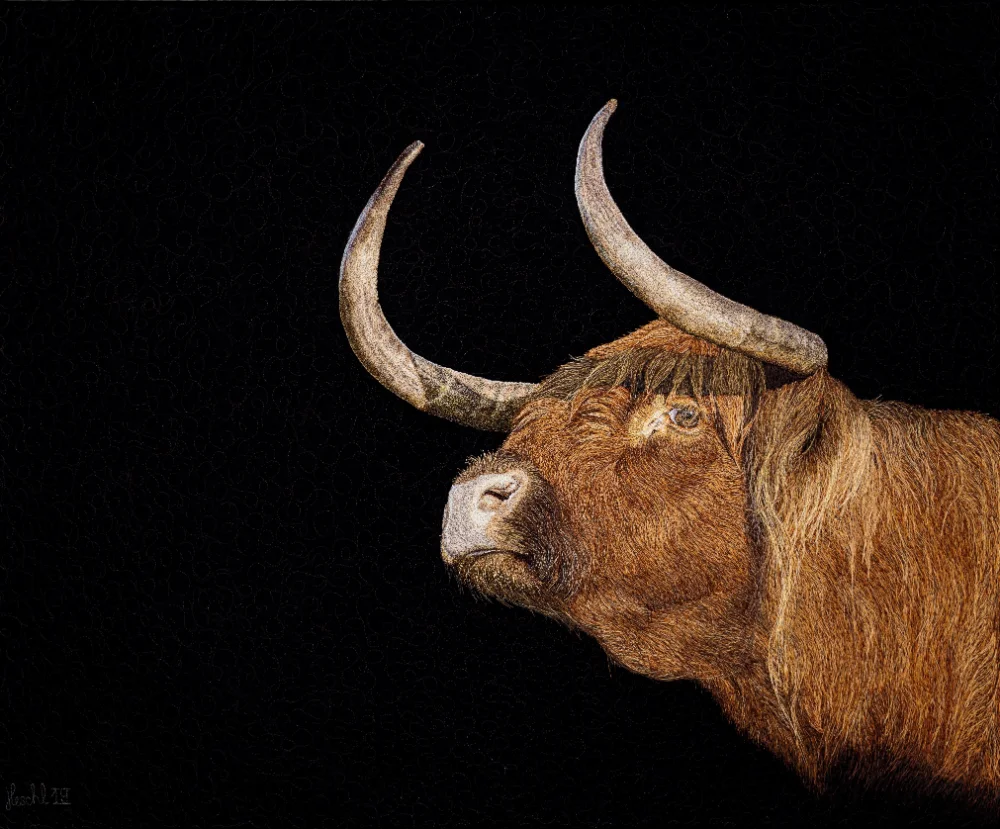
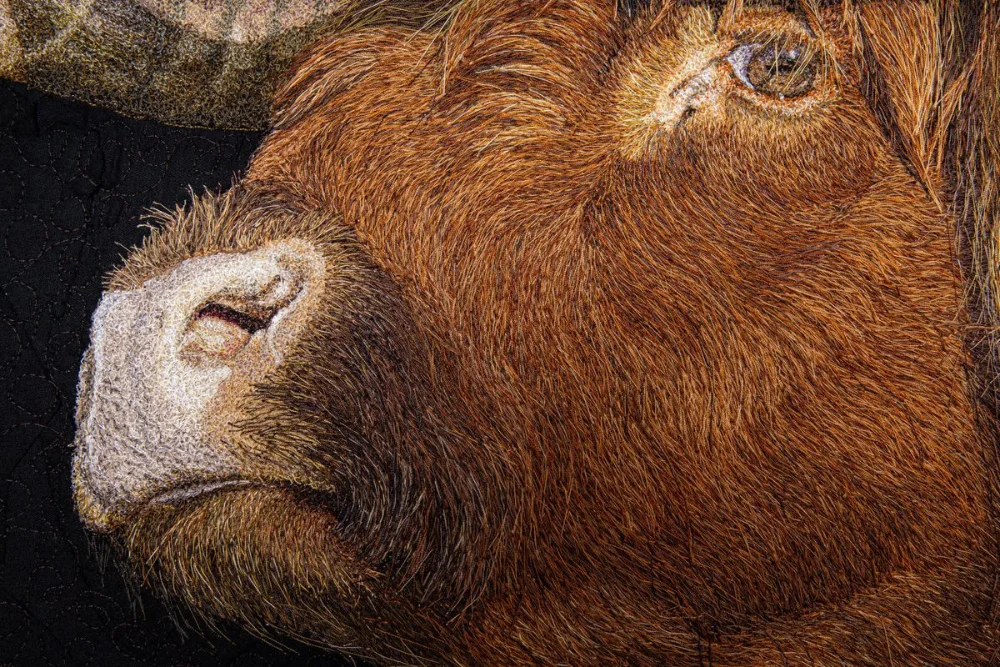
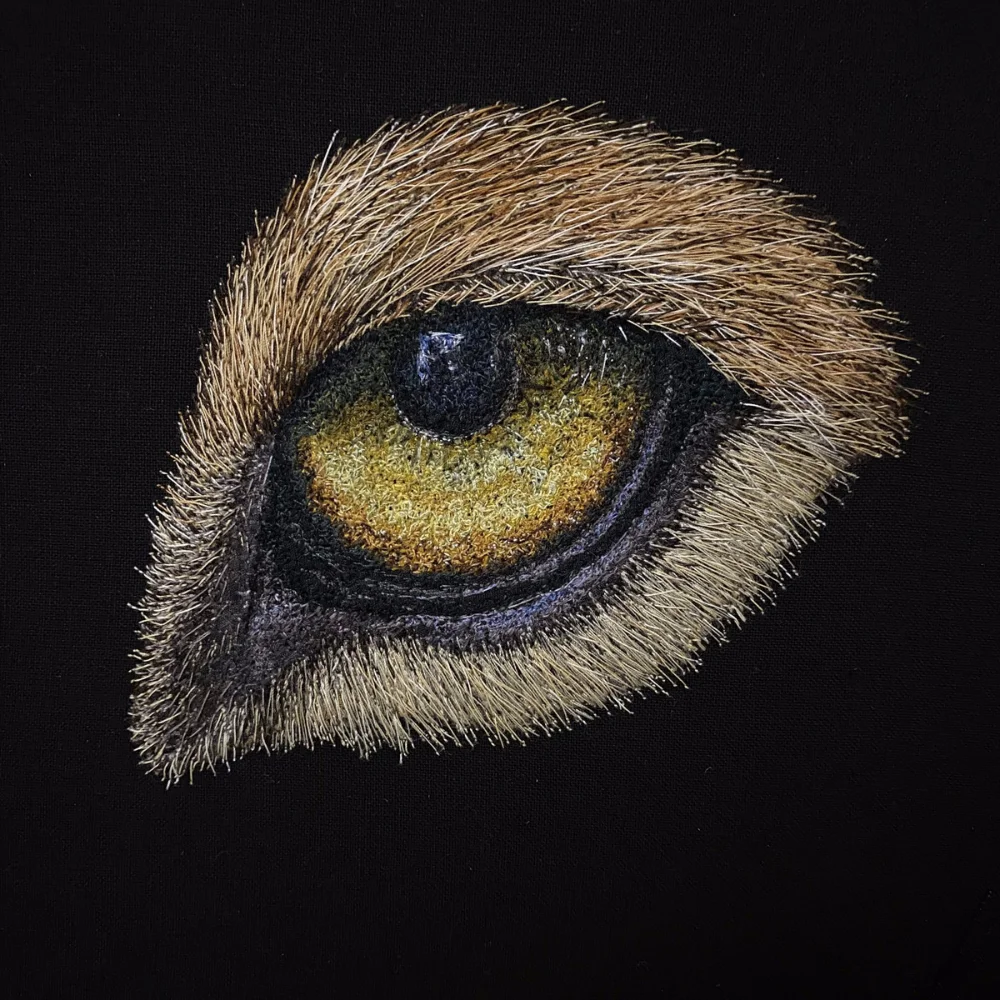
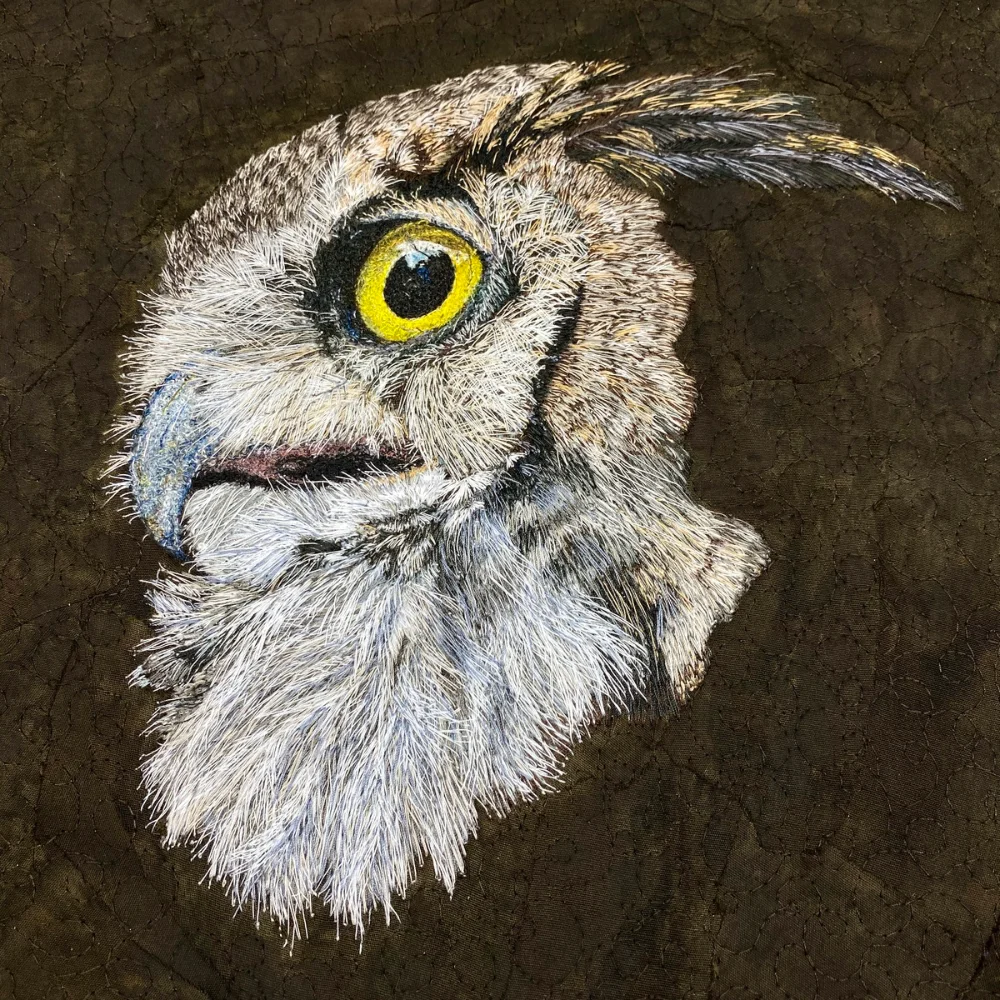
Do you take your own photographs as a starting point or use the work of others?
Unfortunately I am not a very talented photographer and am only able to take photos of the finished pieces in my studio. I couldn’t do my job if it wasn’t for those fantastic photographers out there who allow us to use their art as a reference for a small or even no fee. I am deeply grateful for that!
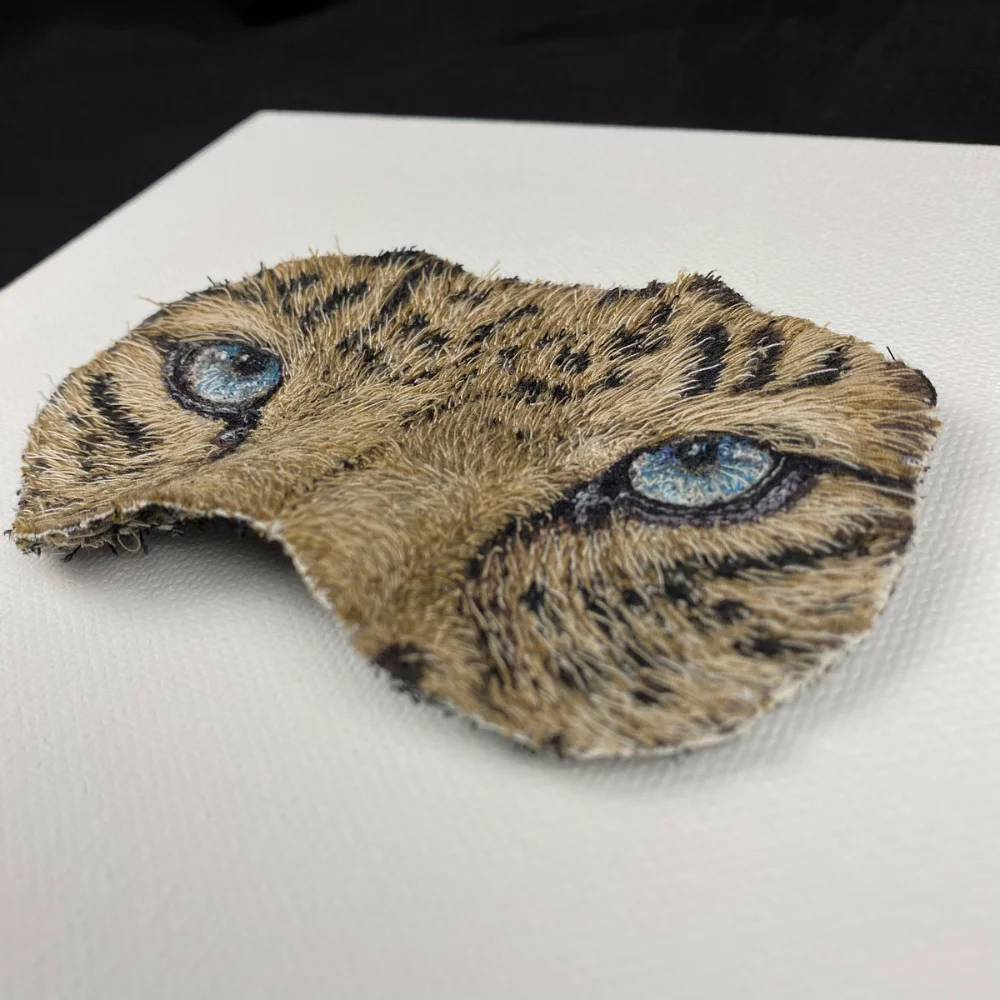
Tell us about the piece you’re currently working on – what is it being made for?
I am currently in between projects, working on creating 3D moss with my flat embroidery machine (vintage Singer 107W102) and also starting a new chimpanzee portrait, this time however in a slightly abstract manner.
The moss is something I have been experimenting with and striving to perfect it for quite some time now. I like the 3D effect on my portraits, especially when embroidering birds for example and have them sit in a patch of moss. It adds to the realism and gives it a special touch.
The chimpanzee is something that has been inspired by the wonderful Dr. Jane Goodall yet again. I have embroidered two chimps for her already, this one is a piece I create for myself, but in honour of her 90th birthday on April 3rd. She is my biggest source of hope and empowerment and embroidering a chimpanzee brings me closer to that.
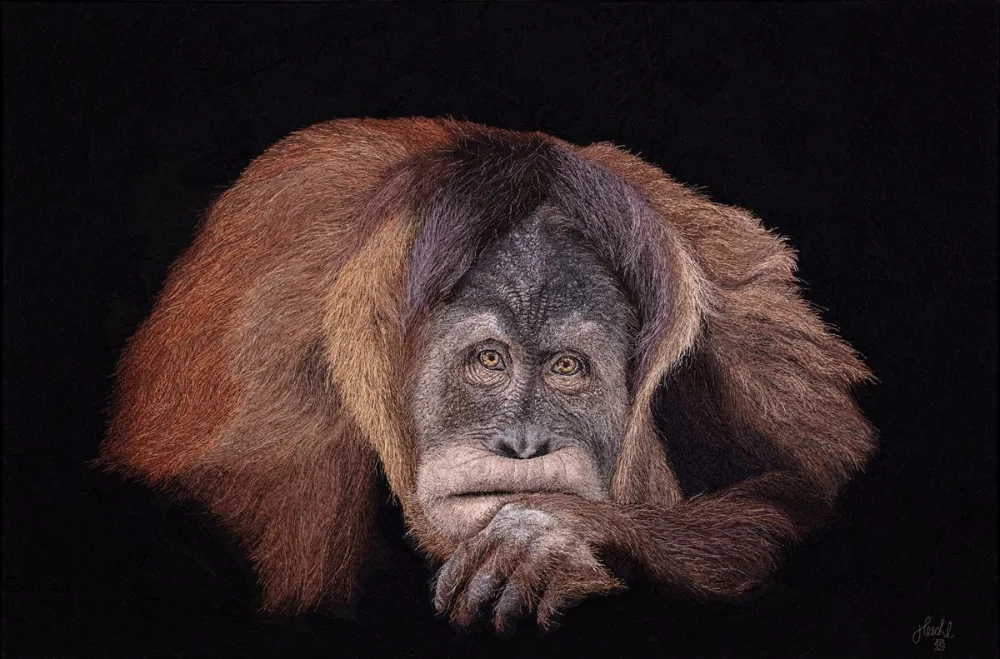
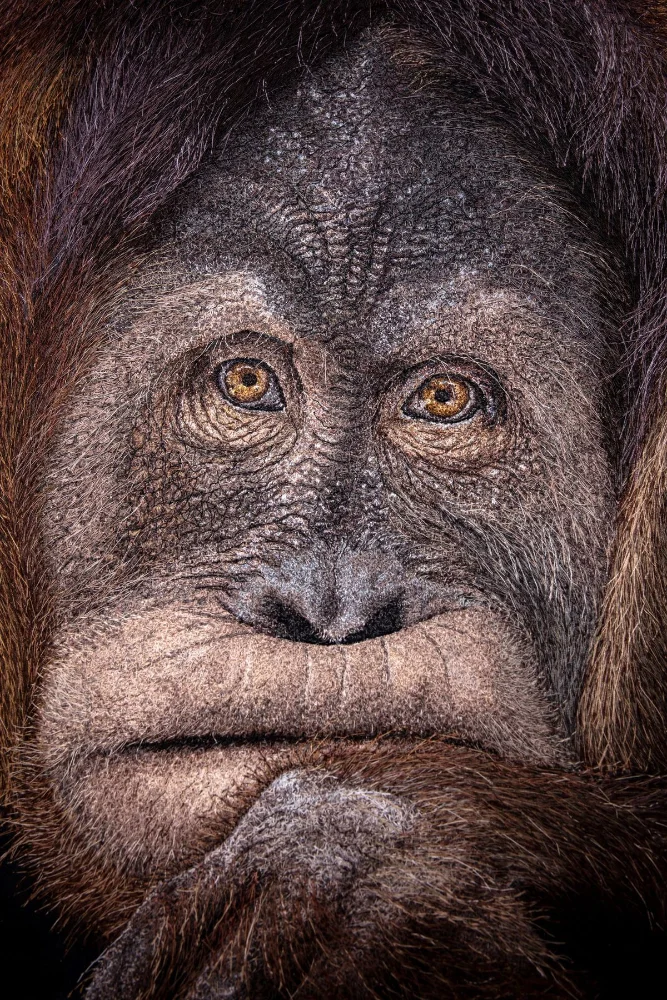
How long does each piece take? There is clearly a lot of stitching in each, so there must be a big time involvement?
The time a portrait takes has a lot of different factors, the main one being the size of the portrait. The African Elephant for example took over 6 months to complete, as it was both highly complex and quite large (90x70cm).
Another factor is my eyesight. Some days I can sit through 3-4 hours straight on my machine and stitch away, others I only get an hour and a half in before my focus goes. Constantly switching from photo to canvas is tiring and zooming in on small areas fully concentrated takes up a lot of energy. There is another factor: family! I have my studio at home and with kids around, you won’t always get the peace and quiet you need to work productively. So, during holidays my working hours decrease too.
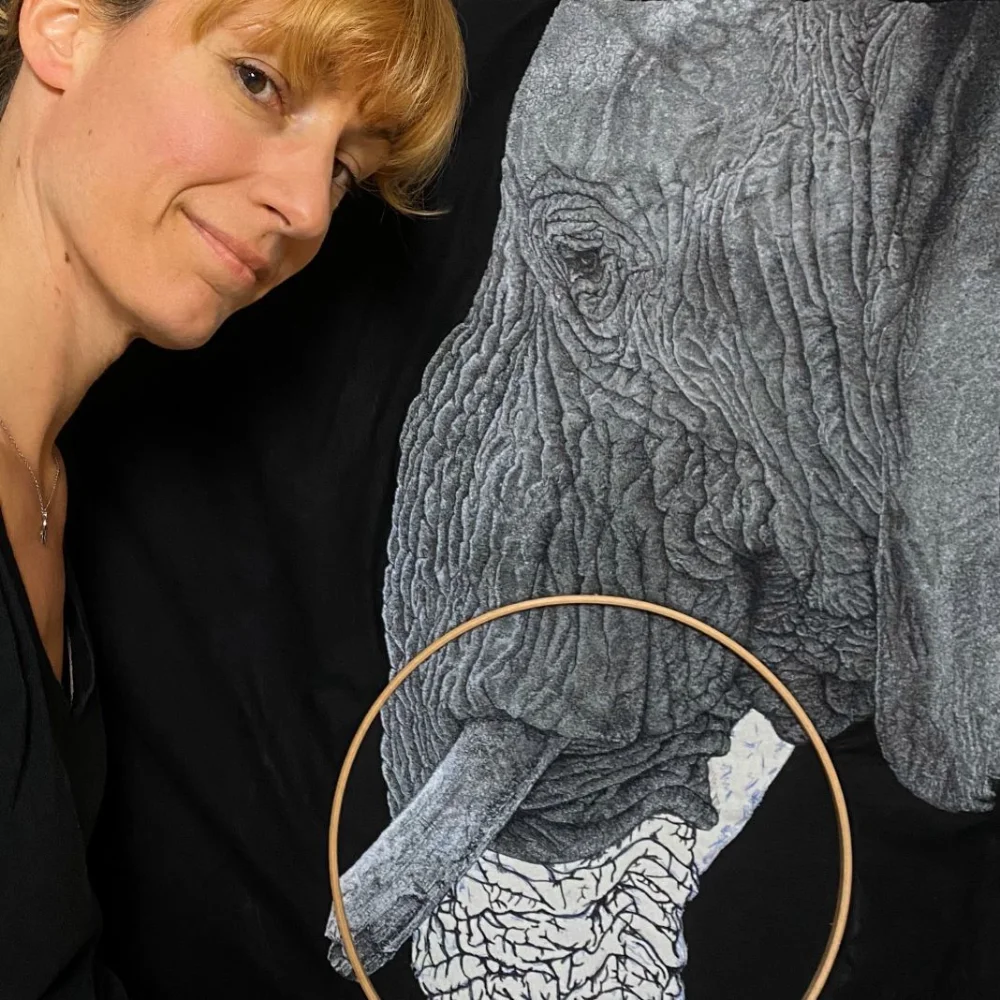
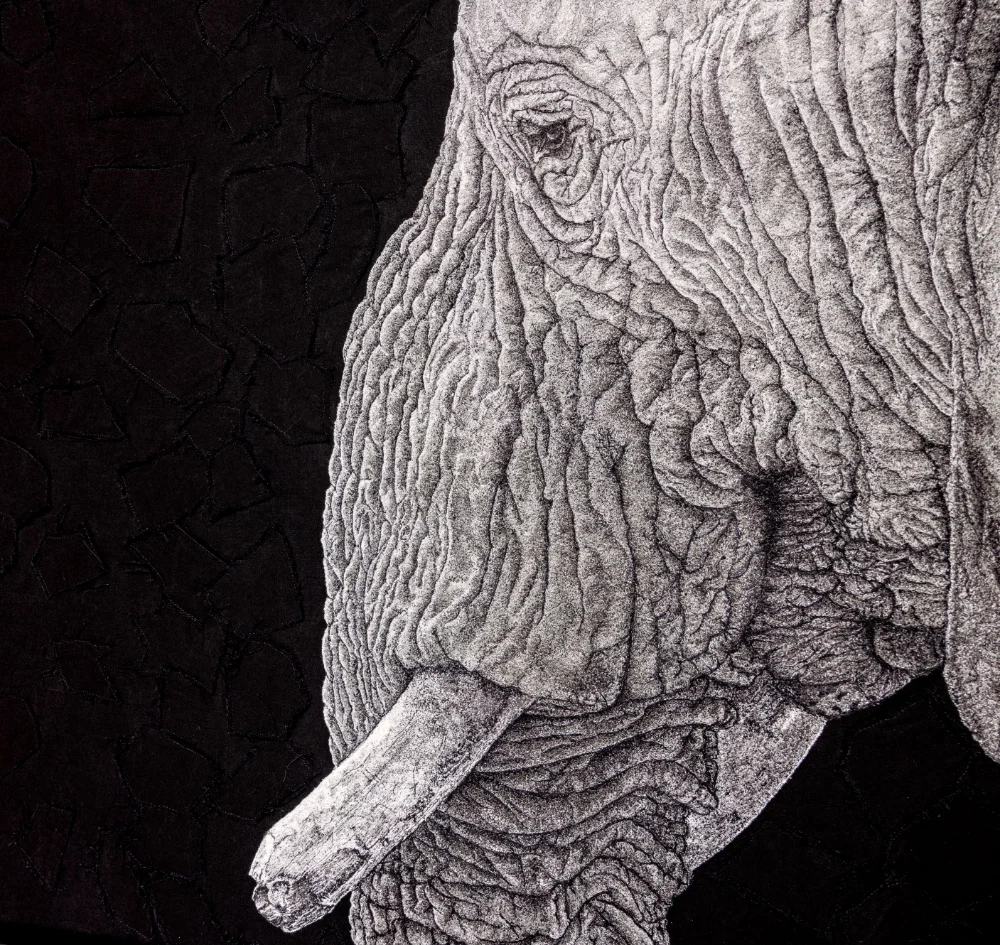
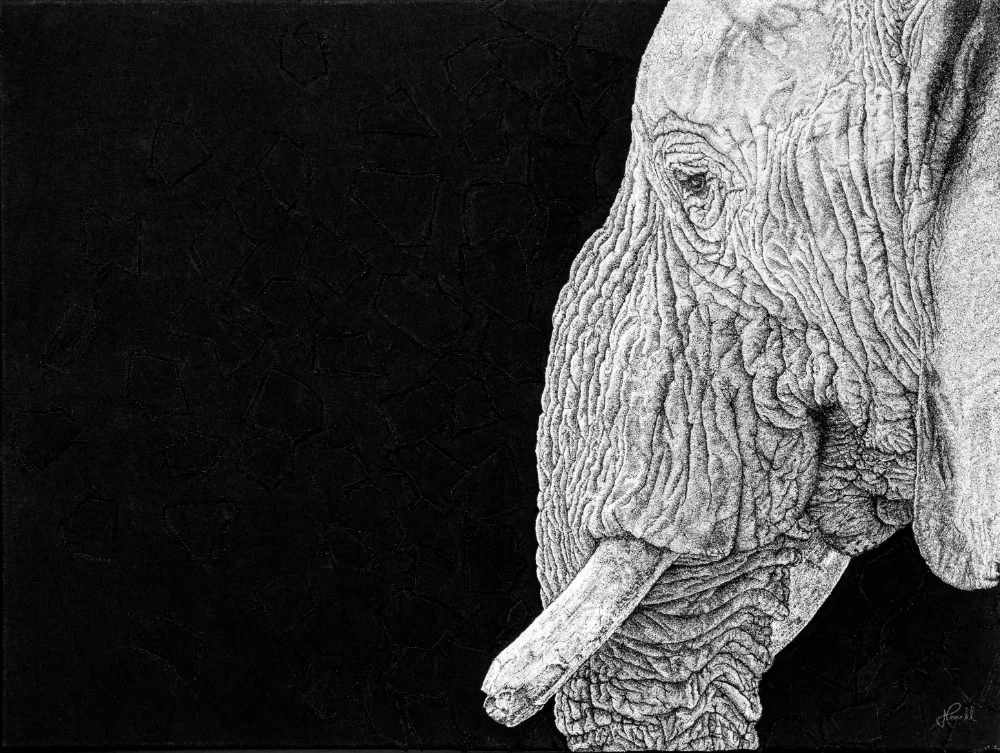
As someone who is trained in special effects make up, that is quite the change in career! What prompted you to make the move?
I have changed my career recurrently over the course in time. From working in Film and Television to assisting the Ambassador of the South Korean embassy, working in hospitality management in Ireland and as a Compliance officer in a Swiss bank. Although, I have found joy in every one of those positions, none gave me the purpose that I find in textile art. Here I get to have an opinion and express it. I get to show the world what is close to my heart and convey a message. I can raise awareness and funds with my work and I have an amazing community to be part of. It took me a while to find what I was looking for, but I am ‘home’ now!
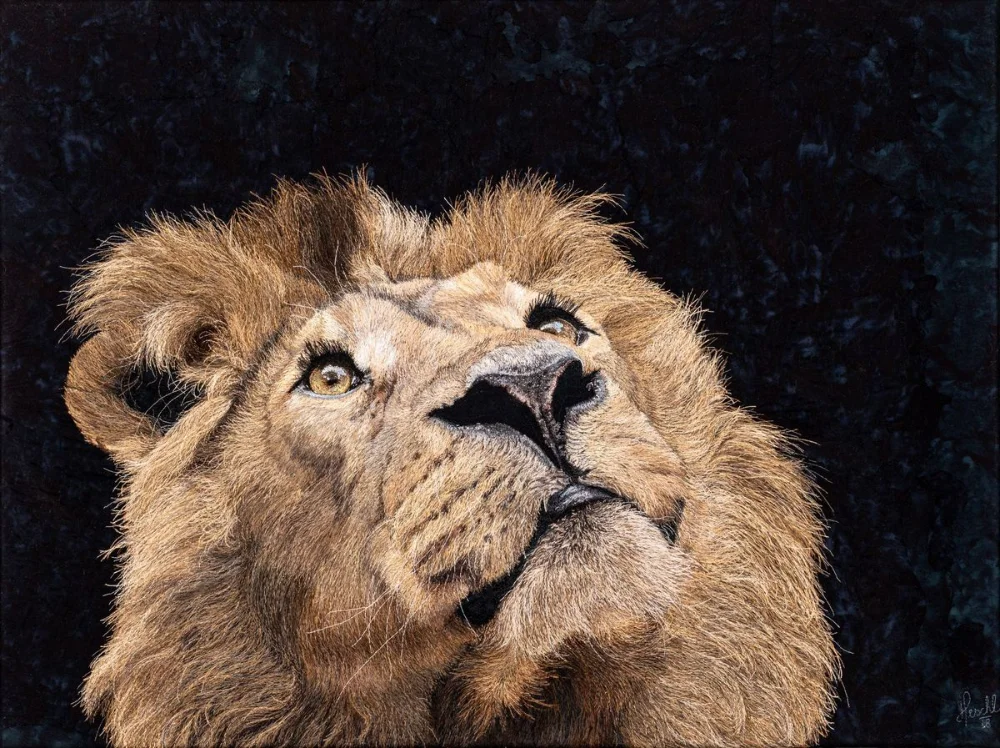
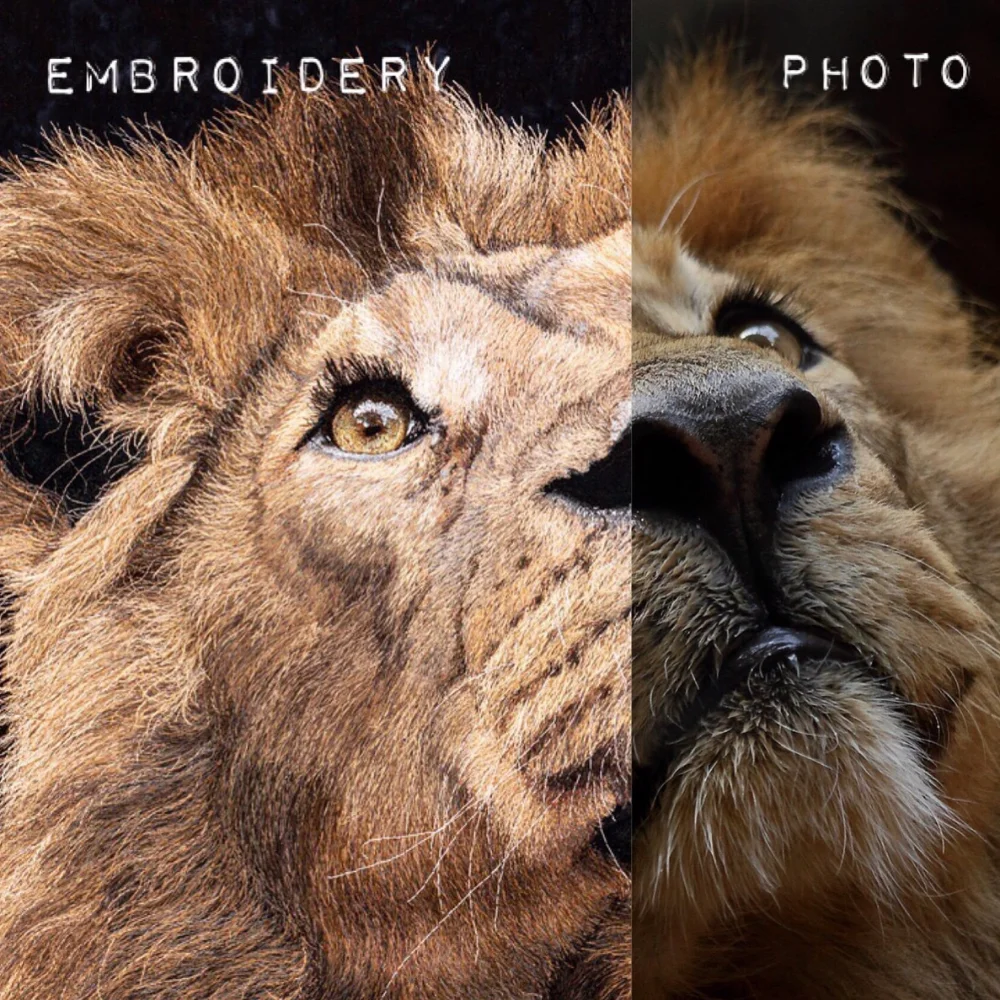
Do you have any advice for our students on where to look for inspiration and how to tackle ‘low productivity’ phases when it is hard to motivate themselves?
I am someone who is constantly inspired. I see a patch of moss in the woods and ideas pop up. For me, documentaries are a great source of inspiration.
Inspiration is all around us, you just have to focus on the right thing and let yourself be inspired. The best time to open the doors to ideas is when you are alone in a ‘happy place’. For me, that’s the forest. I am there daily and I let my thoughts wander. Nature is an amazing source for letting stuff go and for closing all those tabs in your head and to open up for what really matters.
As for ‘low productivity’, my advice is to take small steps. You cannot force creativity, but you can ‘clear the path’ for when it attacks. Update your website, sort your working materials, read up on new techniques, go to the museum, create a vision board, clean your studio, and exercise (we all know our backs and necks need it!). Do the little things that feel productive and leave you feel accomplished. The great thing about creativity is that it is very stubborn! It will return, it is just a matter of time, which you can use wisely.
Under no circumstances go on social media and spend your time there dwelling on the work of others! That not only kills your mojo, but it leaves you feel empty and results in a longer road to creative recovery.
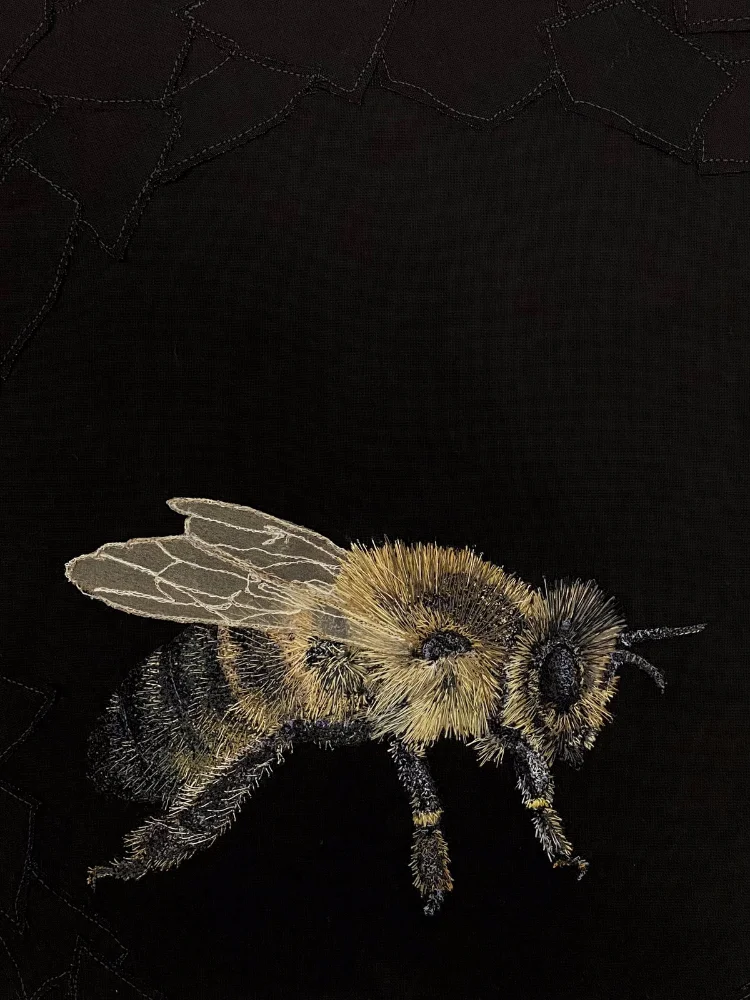
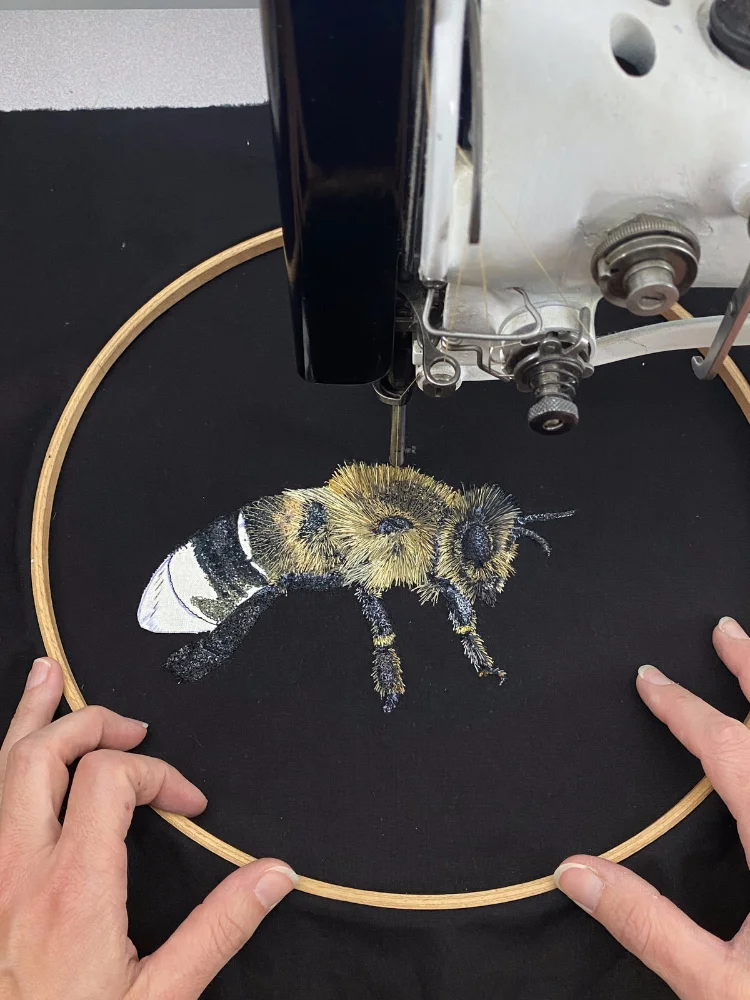
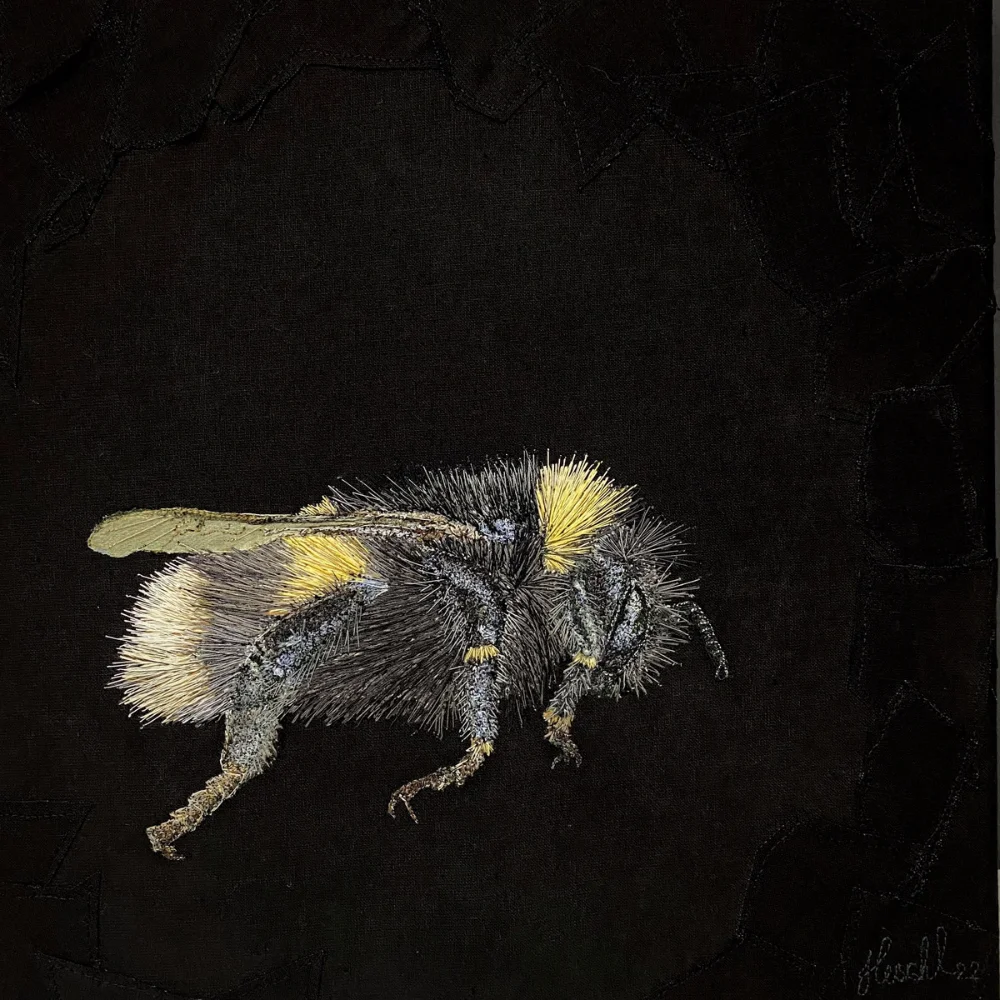
What do you have coming up?
I wish I was the organised artist type who has a full agenda for the entire year mapped out by mid January. But I’m not. I work when inspiration and creativity hit and when an opportunity comes my way, I grab it.
Having said that, I am applying more to exhibitions this year. I think my work needs to ‘get out more’ and be seen not only digitally but also in real life. For me, the introvert and not-so-good-in-socialising type, this is quite a challenge. But I feel it’s time for new adventures. Teaching is another thing I want to get back into. I love sharing my technique and passion for my artwork. So no concrete plans, but many ideas of what I invite into my creative journey.
Discover more on Janine Heschl’s website, or follow her on Instagram.
Key Takeaways
These insights provide valuable advice and inspiration for textile artists, crafters, and makers, emphasising the importance of perseverance, creativity, and self-care in the artistic journey. Here’s what we’ve learned from Janine Heschl:
Self-Taught Journey: Janine’s journey into textile art started with a desire to sew her own bellbottom jeans at the age of 14. Despite initial struggles, she persisted and eventually found her niche in embroidery, inspired by the work of textile artist Poppy Treffry.
Process and Technique: Janine’s process begins with hours of scouring wildlife reference photos until she feels a connection with her subject. She then creates a detailed fabric collage as a roadmap for her embroidery, focusing first on the eyes to set the mood of the piece. Her embroidery technique involves layering thread to create realism, often using multiple colours to replicate the nuances of fur and other textures.
Source of Inspiration: While Janine doesn’t take her own reference photos, she relies on the work of talented photographers for inspiration. Her current projects include experimenting with 3D moss embroidery and creating a chimpanzee portrait in honour of Dr. Jane Goodall’s 90th birthday.
Time Involvement: The time required for each piece varies depending on factors such as size, complexity, and personal circumstances. Larger pieces like the African Elephant can take over six months to complete, while interruptions from family life can affect working hours.
Career Change: Despite a background in various fields including special effects makeup and hospitality management, Janine found her true purpose in textile art. She values the opportunity to express herself, raise awareness, and be part of a supportive creative community.
Dealing with Low Productivity: Janine advises taking small steps during periods of low productivity, such as updating websites, exploring new techniques, or engaging in physical activity. She emphasizes the importance of finding inspiration in nature and avoiding comparison on social media.

